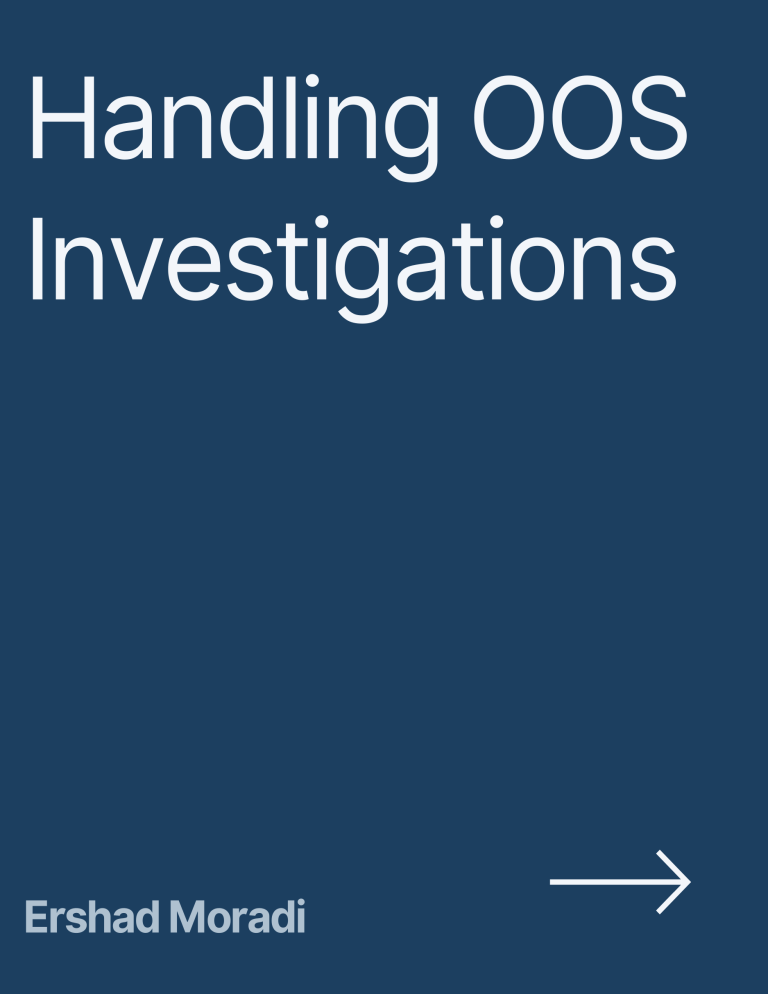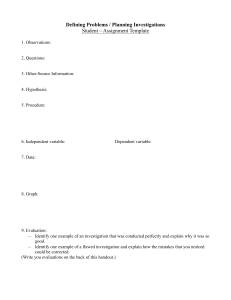
Handling OOS Investigations Ershad Moradi Phase I: Laboratory Investigation In this phase, the analyst and supervisor are responsible for identifying and documenting any deviations from standard operating procedures that may have contributed to the OOS result. Analyst Responsibilities The analyst should thoroughly review the data, ensure that all calculations are accurate, and report any anomalies to their supervisor. Supervisor Responsibilities The supervisor should provide guidance to the analyst, review all documentation related to the OOS result, and initiate the investigation process. Phase II: FullScale OOS Production Review In this phase, a comprehensive review of the production process is conducted to identify any potential factors that may have contributed to the OOS result Production Personnel Responsibilities Production personnel should provide input on potential causes of the OOS result and work closely with the laboratory team to gather relevant information. Quality Control Responsibilities The quality control team is responsible for ensuring that all production processes are in compliance with regulatory requirements and that proper documentation is maintained OOS Additional Laboratory Testing In some cases, additional laboratory testing may be required to confirm the OOS result or identify any potential errors in the initial analysis Sample Retesting Sample retesting should be conducted using the same or an alternative analytical method to verify the accuracy of the initial results Investigation Protocol A detailed investigation protocol should be developed to guide the investigation process and ensure that all relevant factors are considered Root Cause Analysis A thorough root cause analysis should be conducted to identify the underlying factors that contributed to the OOS result. Corrective Actions Based on the findings of the investigation, appropriate corrective actions should be implemented to address any deficiencies in the production process Preventive Actions In addition to corrective actions, preventive measures should be put in place to prevent future occurrences of OOS results Documentation and Reporting All findings and actions taken as a result of the OOS investigation should be properly documented and reported to relevant stakeholders Regulatory Compliance It is important to ensure that all OOS investigations are conducted in compliance with regulatory requirements and guidelines Communication with Stakeholders Clear and effective communication with all stakeholders, including regulatory bodies, is essential throughout the OOS investigation process Training and Development Ongoing training and development programs should be implemented to ensure that all personnel are equipped to handle OOS investigations effectively Continuous Improvement Regular review and assessment of the OOS investigation process should be conducted to identify opportunities for improvement Lessons Learned It is important to learn from each OOS investigation and apply those lessons to future investigations to prevent similar issues from occurring. Conclusion It is important to learn from each OOS investigation and apply those lessons to future investigations to prevent similar issues from occurring. Will you give this a try? Leave a comment below
